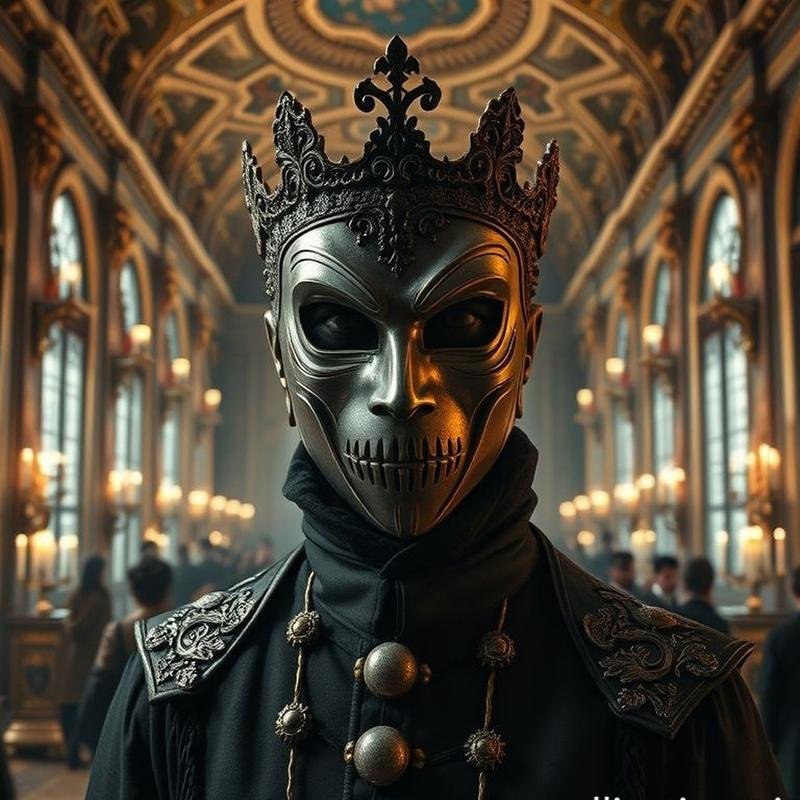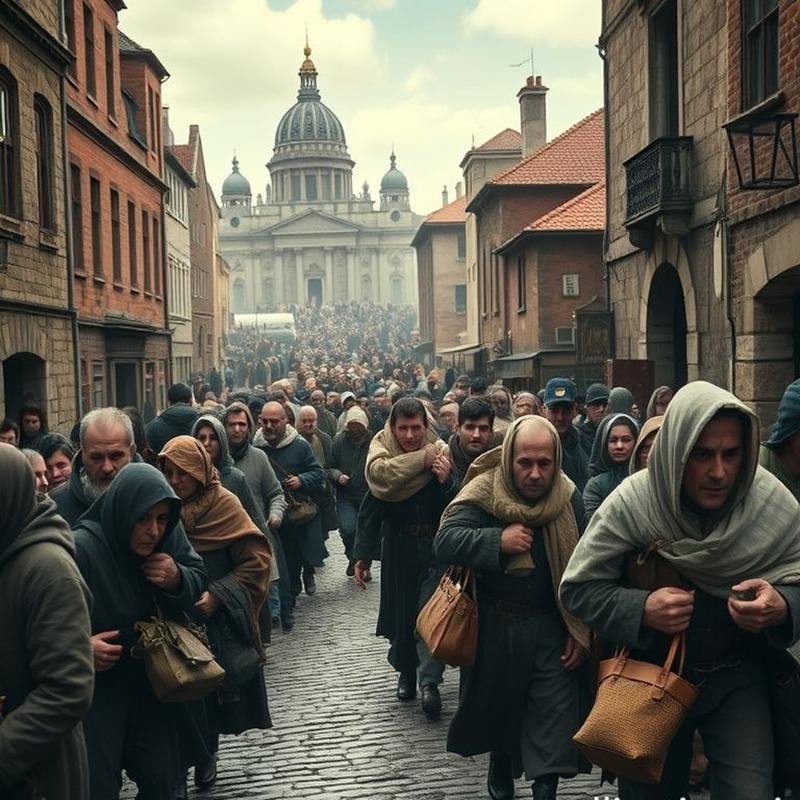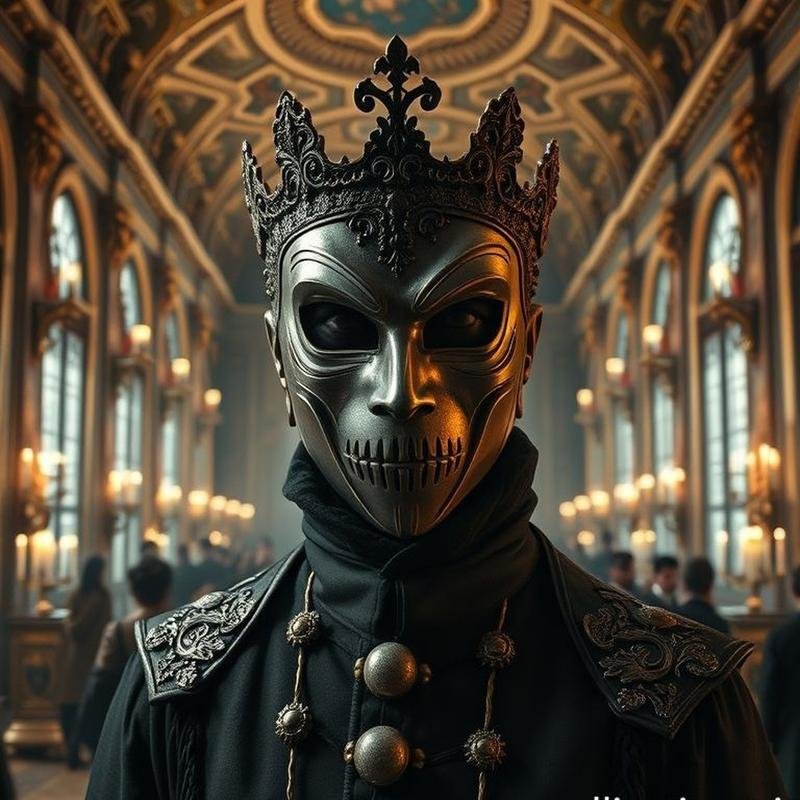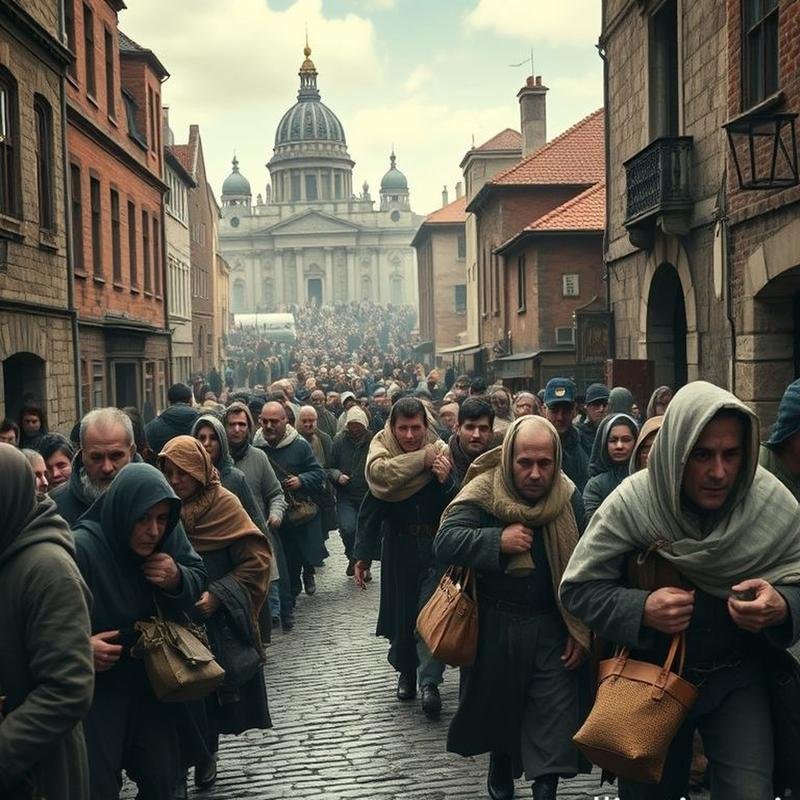The Iron Mask: The Enigmatic Prisoner Who Terrified France.

The Iron Mask: France’s Enigmatic Prisoner
What could be more unsettling than a human face? This seemingly fantastical question lies at the heart of the chilling mystery surrounding a man who lived and died behind an iron mask in the prisons of France. This mask not only concealed his features but effectively erased his identity, reducing him to a mere specter. In this episode, we will endeavor to uncover the identity of this unknown prisoner and explore the profound motivations that caused his very shadow to instill fear throughout France. We will examine the immense psychological toll exacted upon a man deprived of his most fundamental human right: the right to exist under his own name.
Before we delve into the details of this enigmatic figure, we invite you to share your hypotheses: who do you believe this prisoner was, and why did he inspire such terror within the kingdom? We also encourage you to subscribe to our documentary channel and enable notifications to support our ongoing efforts to illuminate hidden historical truths.
The Reign of Louis XIV: Power and Paranoia
In the heart of France, under the imperial reign of Louis XIV, power was not merely a prerogative but a meticulously constructed spectacle. The young king, who inherited a volatile throne in 1643, did not fully consolidate his authority until the death of Cardinal Mazarin in 1661. Only then did his famous declaration, “L’État, c’est moi” (“The State, it is I”), become a stark reality. The Palace of Versailles, that magnificent edifice, was more than just a residence; it was a symbol of absolute power, a stage upon which thousands of nobles and servants gathered under the king’s watchful gaze.
However, behind the palace’s dazzling facade lay an intricate network of spies and informers, orchestrated by the formidable Minister of War, Louvois, who monitored every whisper, every glance, and every movement. No one was beyond their vigilant scrutiny, as conspiracies were constantly being hatched and uncovered. Amidst this atmosphere of suspicion, Louis XIV made a fateful decision: the revocation of the Edict of Nantes in 1685. This act forced hundreds of thousands of Huguenots to flee, taking their wealth and skills with them, thereby inflicting a severe blow to the French economy. These decisions, coupled with the exorbitant cost of the War of the Spanish Succession, painted a picture of a reign characterized by extravagance and deep-seated anxieties, the perfect backdrop for the emergence of the Man in the Iron Mask, a prisoner whose very existence sent shivers of fear throughout the kingdom.
A Lifelong Journey Behind Bars
From Nantes to the dungeons of France, we now enter a chapter of unparalleled isolation, where shadows deepen. Following the momentous decisions of Louis XIV, which shook the foundations of France, a masked prisoner suddenly appears, igniting a storm of questions in a kingdom teetering on the brink. First, the grim dungeon of Exilles, then the isolated island of Sainte-Marguerite, and finally, the dreaded Bastille. Three somber stops on a lifelong journey behind bars, under relentless guard, designed to prevent any possibility, however remote, of revealing his identity.
In the Bastille, Governor de Launay himself assumed responsibility for this mysterious prisoner, vowing that no one would ever see his face or hear his voice. A black mask, like a perpetual shadow, clung to his features. While some accounts claim it was made of soft velvet, others describe it as a mask of solid iron, further compounding the enigma. The oppressive silence was the most potent weapon, the ultimate barrier. No one, under penalty of death, was permitted to speak to him. And upon his death, all his belongings were burned in silent flames, ensuring that no trace, no clue, would remain that could lead to his identification. In the Bastille’s records, he was referred to simply as “a prisoner.”
Theories and Speculations
Numerous theories compete for dominance in the historical arena, each vying to supplant the others as the definitive truth. Was the Man in the Iron Mask, as Voltaire boldly suggested, an illegitimate brother of the king, a threat to the venerable Bourbon dynasty at its very core? Faint echoes of history speak of a fleeting royal affair that resulted in an unwanted heir, destined for perpetual concealment. A royal letter, bearing the seal of 1669, reveals a prisoner bearing the alias Eustache Dauger, confined in the dark cells of Pignerol. Is this the true identity of the Man in the Iron Mask, or merely an elaborate smokescreen to conceal a far more dangerous truth?
Another theory posits that he was a cunning Italian diplomat, Ercole Mattioli, who dared to betray Louis XIV in the midst of a secret negotiation. The king’s wrath was overwhelming, and retribution was inevitable. However, does a simple act of betrayal warrant a terrifying iron mask and a life sentence in complete isolation? In 1681, the mysterious prisoner was transferred to Exilles, under the strict guard of Saint-Mars, the very same jailer entrusted with the tragic fate of Fouquet. Is this merely a fleeting coincidence, or are there tightly interwoven threads connecting these three men to a conspiracy far greater than we can imagine?
The Psychological Impact of Isolation
But what of the psychological impact? What are the effects of harsh isolation, impenetrable darkness, and a mask clinging to the face like a second skin? Psychological studies paint a grim picture, a picture of identity deprivation that unlocks the doors to depression and chronic anxiety. Imagine that every mirror reflects a strange face, a face you do not recognize, that your name is no longer yours, and that the world knows you only as “Prisoner Number…”, nothing more.
Sensory deprivation experiments only exacerbate the situation, deepening the wounds. Scientific research reveals that prolonged deprivation of even the simplest sensory stimuli pushes the mind to the brink, where the fragile boundaries between reality and imagination begin to blur. Hallucinations become companions in the bleak cell, and perceptual distortions transform the prison into an endless labyrinth, a labyrinth from which there is no escape. The mask itself, this cold iron barrier, adds another layer of silent psychological torment. How does one feel when forced to hide, even from oneself? Does the mask eventually become an integral part of one’s identity, or does it gradually erase the true self, leaving behind a desolate void? Social psychology experiments demonstrate that deindividuation can lead to brutal behaviors, but what happens when the identity of an innocent person is completely erased, a person guilty of nothing more than being placed in this situation? Prolonged social isolation leaves deep, indelible scars on the brain.
Preserving Royal Prestige
In the heart of France, during the reign of Louis XIV, the divine right of kings was an unshakeable doctrine, and the preservation of royal prestige was paramount. Any threat, real or perceived, had to be crushed without mercy; rumors, especially those circulating around the royal family, were a destabilizing force. Imagine the scenario: the revelation that the Man in the Iron Mask was the king’s illegitimate brother. Royal legitimacy, built upon the foundation of divine right, would crumble. With the rising tide of noble opposition, any whisper of doubt surrounding the king’s lineage would ignite the flames of sedition. Louis, who had demonstrated his ruthlessness in crushing threats, as he did with Fouquet, would not hesitate to resort to extreme measures.
In that era, court memoirs were powerful instruments of propaganda. Louis understood that the written word could distort facts and incite the masses. The mask, then, was not merely a prison, but a means of enforced silence. During the War of the Spanish Succession, when France was risking everything, any rebellion or questioning of the crown’s legitimacy was tantamount to a death sentence for the nation. Concealing the prisoner’s identity was a shield protecting the kingdom from collapse.
A Tool of Absolute Power
The mask was not merely a piece of cloth or metal concealing a face, but a resounding declaration of Louis XIV’s absolute power. The ability to strip a human being of their entire identity was a terrifying reflection of the state’s unassailable authority. In the 17th century, identity concealment was a harsh punishment reserved for traitors and conspirators. The mask, in this case, was nothing less than social death, an eternal banishment from the world of the living. The goal was not merely to hide the identity but to prevent any communication, any leak of information that could threaten the foundations of the regime. It was a tool of strict censorship, gagging a mouth that might utter what should not be uttered. A constant reminder of the prisoner’s lowly status, a crushing of his spirit, making him more pliable and controllable. The face, the window to the soul, was transformed into a black veil. A complete stripping of humanity, a transformation into a mere number, a mute tool in the hands of power. The cost of maintaining this terrible secret—the mask itself, the special food, the multiple prisons—all point to the value of the information this prisoner possessed, or the immense threat he posed. His privileged treatment, compared to other prisoners, suggests that he was not just an ordinary prisoner but someone of particular importance, requiring exceptional treatment and unprecedented measures.
The Iron Mask in Popular Culture
Yet, even in the darkest depths of the prisons, the Man in the Iron Mask did not simply vanish. Instead, he transformed into a potent symbol, a symbol representing injustice and oppression, igniting the imaginations of artists and writers across generations. Alexandre Dumas’s novel The Vicomte de Bragelonne etched his image into the popular consciousness, even offering a fictionalized explanation of his identity. Cinema, too, recognized the captivating potential of this historical enigma. The 1998 film The Man in the Iron Mask, starring Leonardo DiCaprio, reignited widespread interest in the legend and achieved significant commercial success. This film was not an isolated case; the mysterious figure has appeared in numerous other films and television series, even making an appearance in an episode of Doctor Who. Music has also drawn inspiration from his mystery, leading to the creation of operatic works and ballets rooted in his tale. In 1929, historian André Levan attempted to provide a rational explanation








